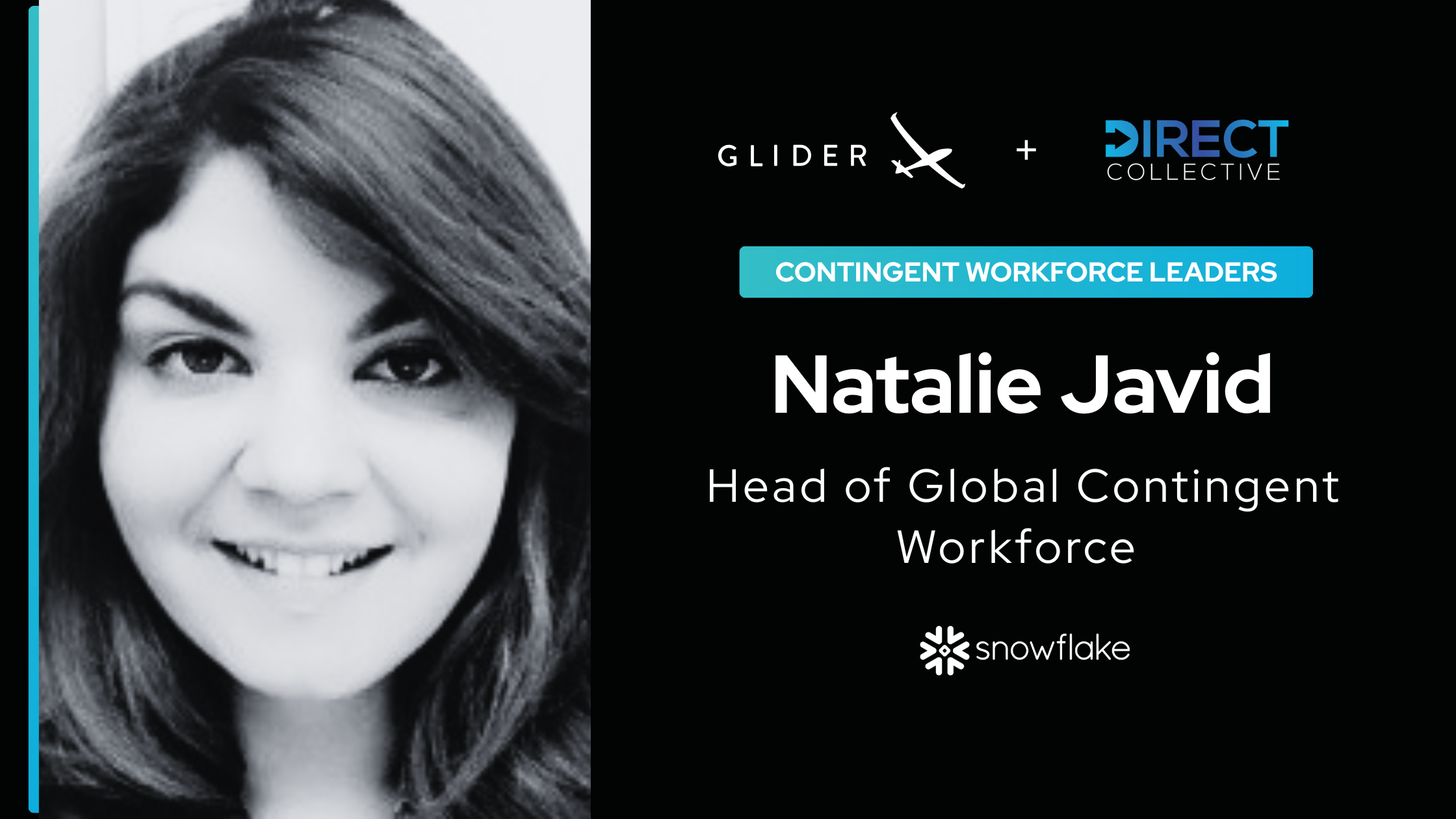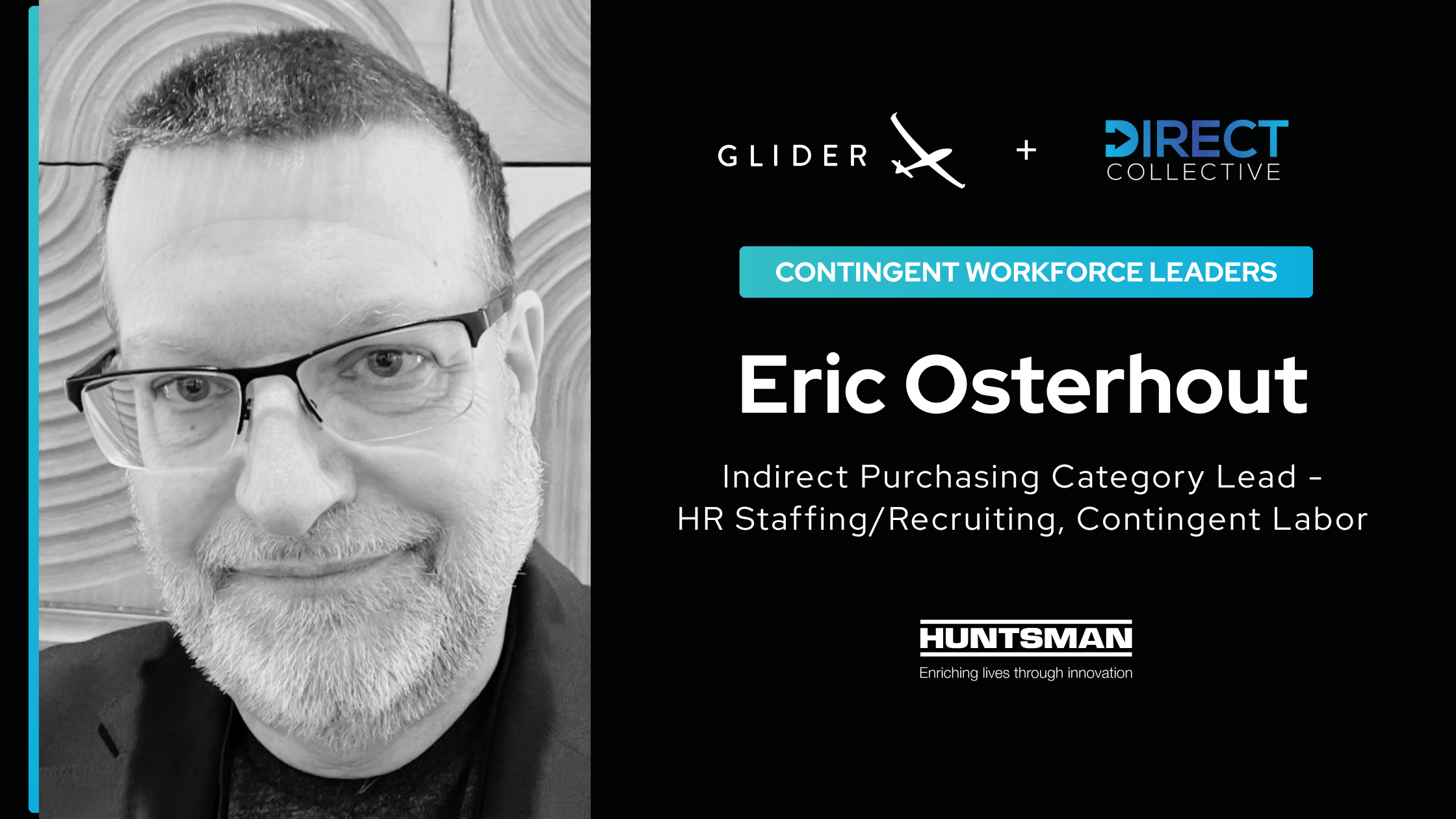
Make talent quality your leading analytic with skills-based hiring solution.

With over a decade of experience managing global contingent worker programs, Natalie Javid brings a wealth of knowledge from her work at tech giants like ServiceNow, Airbnb, and her current role as Head of Global Contingent Workforce at Snowflake. Speaking at ProcureCon 2025, Natalie shared insights on how organizations can move beyond treating talent acquisition as siloed categories and embrace a truly holistic approach to contingent worker management.
For years, “total talent management” has circulated as an aspirational concept in HR and procurement circles without much concrete implementation for contingent worker strategies. According to Natalie, the essence of this approach is deceptively simple but transformational for contingent worker success.
“When I think of Total Talent, I’m looking at the entire ecosystem holistically, not based on employment type.”
This philosophy requires abandoning traditional categories that have dominated contingent worker planning for decades and instead focusing on capabilities, skills, and outcomes – exactly what forward-thinking contingent worker managers are now prioritizing in their workforce strategies.
One of the biggest roadblocks to implementing true total talent management has been technological and organizational fragmentation affecting contingent worker oversight. Most companies operate with multiple systems that don’t communicate effectively, creating significant challenges for contingent worker program visibility.
“We’ve got data in all these different places and teams that need to come together but aren’t working together.”
This fragmentation creates blind spots in contingent worker planning and prevents organizations from making truly strategic decisions about talent allocation and contingent worker acquisition across departments and business units.
What’s changing the game now is the evolution of AI and data platforms that can finally connect these disparate systems and provide unified insights into contingent worker performance and requirements.
“Now with platforms like Snowflake, you can make data-driven decisions about your entire workforce holistically.”
The predictive capabilities of these systems are particularly valuable for forward-looking contingent worker strategies and talent planning.
“AI will tell us what skill sets we’ll need in the future,”
enabling organizations to proactively build their contingent worker pipelines rather than reactively filling urgent gaps.
Modern AI platforms can analyze contingent worker utilization patterns, predict seasonal demands, and optimize contingent worker allocation across projects to maximize both efficiency and cost-effectiveness.
Technology alone won’t solve the total talent management challenge. Even with perfect data integration, fundamental organizational barriers remain.
“If teams aren’t working collectively, it’s only going to go so far.”
Representing perhaps the most difficult challenge for contingent workforce leaders – breaking entrenched ways of working in fast-paced organizations where immediate hiring goals often supersede strategic workforce planning. The wisdom is simple but profound: “Slow down to speed up.”
The ultimate vision for total talent management is a model where work is organized around skills rather than employment classifications.
“Focus on the skill sets needed to get the work done, then plug and play.”
This represents a fundamental shift in workforce planning, moving from rigid categories to a “truly dynamic ecosystem rather than separate categories.”
While total talent management has been discussed for years, the combination of integrated data platforms, AI capabilities, and evolving organizational structures is finally making it achievable.
The key is abandoning the traditional categorization of workers and focusing instead on creating flexibility in how work gets done.
“There are no more categories. It’s a truly dynamic ecosystem.”
Organizations using advanced skills assessment platforms that successfully make this transition will be better positioned to adapt to rapidly changing skill requirements and build more resilient contingent workforce strategies that can flex with business needs.
As AI continues to improve our ability to predict talent needs and match them with available skills—regardless of employment classification—we may finally see the long-promised transformation of workforce management from rigid structures to truly dynamic talent ecosystems.
Dustin Talley (00:00.654)
All right, Natalie, welcome to ProcureCon CS 2025. How the heck are you?
Natalie Javid (00:02.834)
I’m doing great. Thank you. How are you doing?
Dustin Talley (00:06.84)
Amazing. First of all, is this your first ProcureCon?
Natalie Javid (00:09.338)
No, it is not my first ProcureCon. This is my third. So they say third time’s the charm, but I don’t know. I guess so. Okay.
Dustin Talley (00:12.206)
So they say through the time of the forum. OK. You’re an OG at this point. just chatted with Ryan. It’s his first. For someone that’s not been to ProcureCon, can you explain the room that we’re in right now and what’s going on? Yes, we’re working.
Natalie Javid (00:22.778)
Yeah, so we’re in the expo hall there are lots of things happening people are networking people are having a good time watching demos getting to know each other Yeah, I could have gone on I guess It is a good time
Dustin Talley (00:33.006)
It’s a fun time. It’s a really fun time. There’s a lot of drinking happening right now too. So you’ve got to be at ProcureCon. So tell us a little bit about yourself and about your program. Which program are on?
Natalie Javid (00:41.679)
To be noted, you’re in Las Vegas. What’s gonna happen?
Natalie Javid (00:49.958)
Yeah.
So I actually have been in this space for over a decade. And I’ve been Managing global Contingent Workforce Programs and strategies for companies like ServiceNow, I built their program from the ground up, Was at Airbnb, I’ve been and and at Snowflake for almost five years now. Our program is global and we do have staff augmentation. We’ve got a little bit of SOW. We do head count tracking and we do the 1099 IC compliance screening. Yeah, so we do it all and we do have an MSP partner as well as we just implemented a new VMS last year.
Dustin Talley (01:31.288)
Okay, sounds like you’ve been busy.
Natalie Javid (01:39.612)
Yeah, yeah, yeah,
Dustin Talley (01:31.288)
Love it. Let’s talk total talent. I know that’s a hot topic, it always has been, right? But what does that mean to you, first of all, when you hear the buzzword total talent?
Natalie Javid (01:39.612)
Yeah, when I think of Total Talent, really think looking at the entire ecosystem. Every single part of the ecosystem, the full-time employees, contractors, freelancers, what have you, and looking at them holistically, and not so much looking at it based on a full-time employer, contractor, but really just getting the most out of your workforce and not thinking about it in this segmented mentality.
Dustin Talley (01:47.406)
Sure.
Natalie Javid (02:20.464)
That’s all they care about is I’ve got these goals. I’ve got this deadline. Help me out.
Natalie Javid (02:33.222)
Yeah.
Natalie Javid (02:42.214)
Okay, so first I think some of the problem has been we have these siloed systems, we’ve got data in all of these different places, but then also you’ve got the teams that need to come together that aren’t working together. So I think that that has been a huge problem with helping us move towards total talent management. I think those are two of some of the underlying issues that have kept us from getting there. And then now when you think about how AI can help us, right?
So now with platforms like Snowflake, you can take all this data from the various different systems you’re using, your HRAS system, your VMS, your ATS, whatever your ERP system is. And we’re, I mean you’re plugging it into a single platform where you’re ingesting not only your processing, you’re analyzing the data, and then you can start to get really great insights and start making data-driven decisions based on what we’re seeing. But then you can look at your entire workforce holistically.
So, I mean, that’s how I think, you know, AI is going to help us actually move the needle on total talent management. And I know it’s been a buzzword for years, and some companies have kind of got a pulse on it, but I don’t know if any one of us has really got the secret sauce yet.
Natalie Javid (04:25.458)
Absolutely, mean AI is only going to be able to, it’s going to be predictive analytics, right? And The more and more we get used to AI and the more refined it becomes, the better those predictive analytics are going to be. So they’re going to be able to, it will be able to tell us, these are the skill sets that we’re going to need in the future. These are going to be the schools, I mean we already have some of that, but It’s just going to help move the needle, whole new level.
Natalie Javid (05:32.562)
Well absolutely, I think that we’re going to have to have a mindset shift. And I think that even now that we’re all getting this data and we’re able to see it, if the teams aren’t coming together, if they’re not working collectively, then it’s only going to go so far. You have to have those silos break down and teams need to come together and collaborate more. I still think that that’s a huge issue beyond total talent management for most organizations. Yeah. Yeah. Yeah.
And everyone’s moving really fast. Exactly. Because exactly.
Natalie Javid (06:14.066)
Yes, absolutely. Slow down to speed up.
Natalie Javid (06:28.4)
Yeah, I think we have to get away from thinking about talent as this is a full-time employee, this is a contractor, and it’s really just about the skill sets that we need to get the work at hand done. I think we have to really, again, it’s that mindset, I can’t say that word, that mindset shift, right? So we have to stop thinking about, this full-time employee is going to be doing it. We need to know where the talent is that’s available, who has the skill sets to do the work, and then you plug and play.
Yes, exactly. There are no more categories. I mean, really, it should be breaking it down. I was thinking about this when I was taking my notes and I was saying it’s like a truly dynamic ecosystem rather than separate categories.
Natalie Javid (07:24.732)
Yeah. It’s been a pleasure. Thanks for having me.

Revolutionizing Future Trends with AI in Contingent Workforce Management The Human Touch in an AI-Driven Industry Eric Osterhout brings almost two decades of experience to the contingent workforce management space, currently serving as a Program Leader and Buyer for Contingent Labour at Huntsman Corp. With 17 years on the buyer side and 10 years previously […]

How AI Will Reshape Contingent Workforce Management by 2030 Meet Chris Farmer – Global Head of Contingent Workforce Strategy As the Global Head of Contingent Workforce Strategy and Strategic Sourcing at Salesforce, Chris Farmer leads one of the most complex and forward-thinking CW programs in the industry. Chris has spent over five years at Salesforce, […]

Cracking the Skills Code: Moving from Misconception to Mastery The future of work is skills-first. Despite the many benefits of skills-based hiring, implementing it can be challenging. It demands a shift in mindset from those who have long relied on degrees as a stand-in for skills. Employers must also take a critical look at each […]